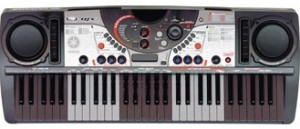Been a while since I’ve posted. 🙂 That means I’ve been busy with a few hunker-down, wintertime projects.
At long last, I pulled together the second version of my “Performance Styles for PSR/Genos” collection. The second version has all of the V1 styles plus a dozen new V2 styles.
The V1 styles were translated from Motif XS/MOX Performances to Tyros/PSR. If you would like to read about the translation process, check these links:
- MOX performance to PSR style (part 1)
- MOX performance to PSR style (part 2)
- MOX performance to PSR style (part 3)
These articles are still a good read if you are interested in creating original styles of your own. There is a short Getting Started With Style Files post, too.
The V1 style files target PSR-S950, which by now is old hat. So, the original V1 styles should be reasonably compatible with any post-S950 arranger.
The V2 style files take the collection into new territory. The V2 styles include contemporary genres like downtempo and make wide use of DSP insert effects. I developed the styles on Genos (gen 1) which supports a single insert effect on each style part. The V2 styles are compatible with Genos2. Some voices and DSP effects may not be supported by earlier arrangers. Genos1 still leads the pack in many dimensions!
Nonetheless, I encourage you to download the new collection. You might need to re-voice a style part or two and maybe redirect the DSP units which are available on your music machine. The styles are SFF1 even though a few new styles use Mega Voice. Being SFF1, you should be able to edit the styles with Mixmaster or any of the wonderful tools created by Jørgen Sørensen. I owe Jørgen a debt of gratitude since his CASM editor, OTS editor and Style Split/Splice programs are essential tools for any style developer.
Download Performance Styles for PSR/Genos (Version 2). The ZIP file includes a README text file. Be sure to check it out.
Copyright © 2024 Paul J. Drongowski


